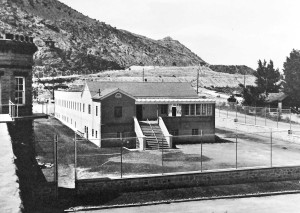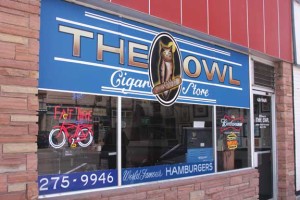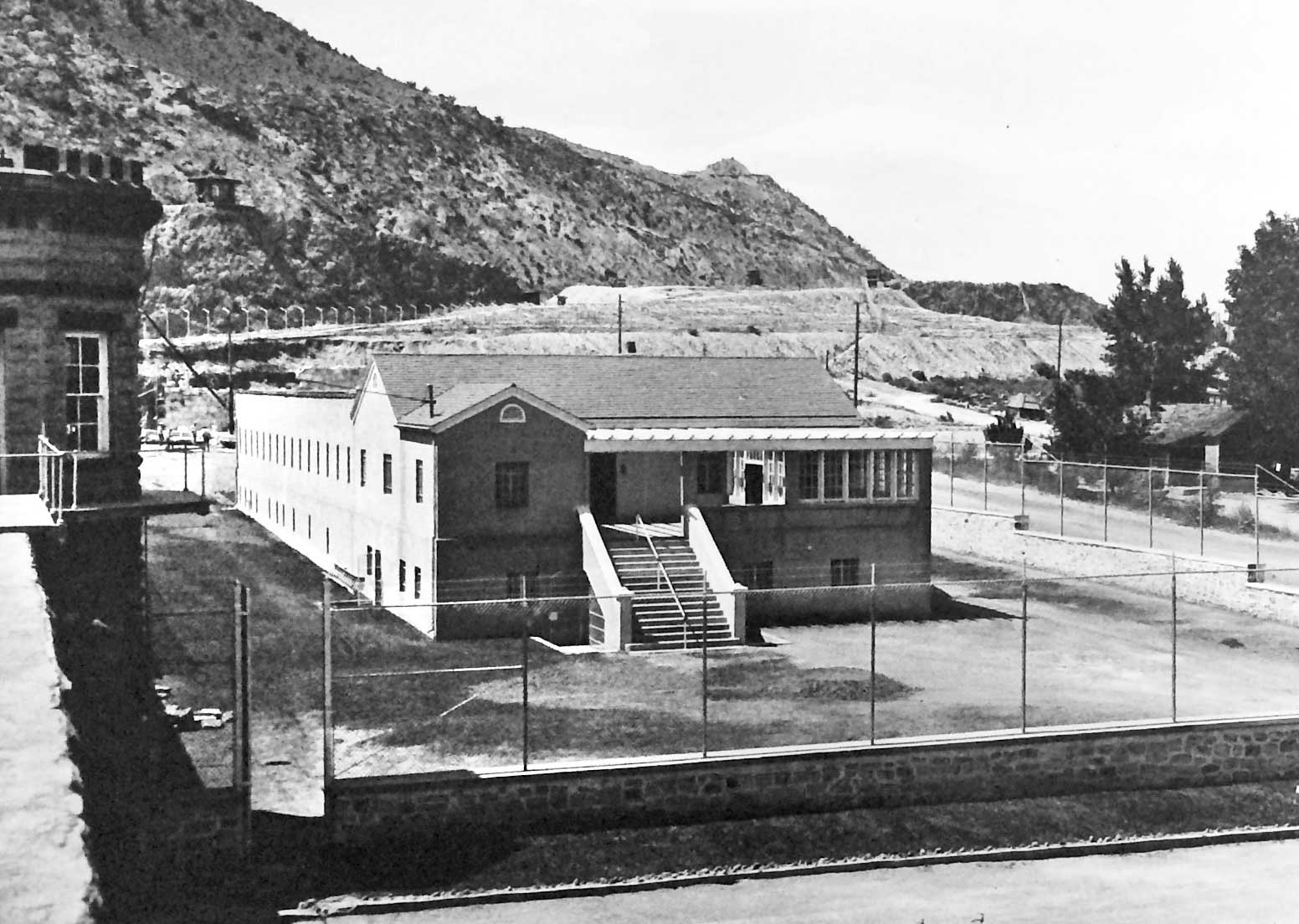by Mike Rosso and Daniel Smith
One of the joys of living in Central Colorado is the opportunity for adventurous day trips. Whether you live in Leadville, Westcliffe, Gunnison or here in Chaffee County, there are miles of scenic and historic drives one can take, see some amazing sites, and still make it home for dinner.
One morning in mid-April, Daniel Smith, a semi-retired Front Range journalist and I hit the road, heading downriver along U.S. Hwy. 50 to Cañon City. Our goal was to do some research, shoot some photos, eat some local cuisine and explore roads we’d never taken. We managed to accomplish all of these things before sundown.
Our first official stop was the Museum of Colorado Prisons, an odd place to begin our explorations, but fascinating nonetheless.

The Museum of Colorado Prisons
The museum is easy to find. Coming from the west, just turn left on South First Street, just past the Colorado Territorial Correction Facility (Old Max – just look for the guard towers and razor wire). A left on North First Street takes you to the gates of the museum.
After a brief tour of the grounds, including a few minutes to gawk at the gas chamber that has been brought in and reassembled on the property, we went in and introduced ourselves to Stacy Cline, director of the museum.
Stacy was a wealth of information about the facility as well as the history of the Colorado Territorial Prison. The two-story, concrete block museum was formerly a women’s prison, the first of its kind in the state. Up until its construction, women actually shared cell houses with the men next door. It was built in 1935 and closed its doors in 1968. Little about the building has changed since that time. The cells are still in place, as are the laundry and cooking facilities and the dreary isolation cells in the basement.
In 1987, the Colorado Senate passed Act 100, allowing the state to grant the Department of Corrections permission to lease the property, at a cost of a dollar a year for 99 years, to a group of Fremont County residents for the sole purpose of operating a prison museum.
In the early 1980s, this group first envisioned a museum at the facility and formed a Board of Directors in 1986. The group went on to raise funds to stabilize the building as well as upgrade the utilities. It officially opened its doors in June 1988.
The museum is currently supported through admission costs and grants and graces both the State and National Historic Registers.
On display immediately upon entering the museum is furniture belonging to Roy Bess, first warden of the state Territorial Prison. Down the hall are 30 inmate cells, all of which have been restored – each one featuring a display depicting various aspects of Colorado prison life, as well as historically significant events such as the prison riots of 1929 and 1947.
One cell is dedicated to the notorious cannibal, Alferd Packer, who was imprisoned in Cañon City. Another depicts what a women’s cell might have looked like in the 1960s, complete with family photos and frilly coverlets. Various displays feature contraband found on inmates, such as knives and drug paraphernalia. If one of the ideas behind these displays is to get one to think twice about committing a crime, well, mission accomplished. The museum does not sugarcoat life behind bars.
Stacy allowed us access to the museum’s extensive archives which include log books, some dating back to the 1800s, as well as photographs and negatives of every inmate checked into the facilities. Paintings done by inmates while incarcerated adorn the walls on both levels. Individual audio tours are also available for visitors.
The museum even hosts a group of ghost hunters each summer, who search for proof of the paranormal within the old prison walls. These unusual investigations are open to the public for a fee.
The well-stocked gift shop contains such gag items as black-and-white striped pajamas and aprons, fake handcuffs and ball and chains, as well as items produced by inmates through the Colorado Correctional Industries such as wallets, cutting boards and fly-fishing rods.
[InContentAdTwo]
The well-manicured grounds also feature historic relics of Colorado prisons as well as that infamous gas chamber, a macabre spot to maybe have a bit of lunch.
They are open from 10 a.m. to 6 p.m. from May 20 through Sept. 31, and from 10 a.m. to 5 p.m., Wednesday through Sunday during the Fall/Winter season. www.prisonmuseum.org
The Owl Cigar Store
All the talk of incarceration and solitary confinement triggered our appetites, so after an obligatory stop at the Goodwill store, we found a couple of countertop stools front and center at the famous Owl Cigar Store, a Cañon institution since 1903. They quickly whipped us up a couple of double-double burgers and sides of fries (though I was tempted by the egg burger). The burgers came wrapped in paper and the fries in a cardboard boat. To finish things off, we both ordered malts – vanilla for me, chocolate for Dan. With tip, we both got out of there for ten bucks each.

The place is truly a time capsule. Locals of all ages gather there to eat, drink, play pool or just to visit. At the end of our meal, we introduced ourselves to one of the owners, Steve “Rocky” Mitchell. He co-owns the Owl with his cousin Pete Santilli, whose family first bought the business from Fred Luthi in 1943. Luthi had bought the Owl from the original owner, Fred Sartor.
In 1947, the Owl was remodeled and pool tables added, but it wasn’t until the mid-1960s that women began going there. It’s not that they weren’t allowed, they just weren’t that interested in mingling with cigar-smoking, pool playing, drinking men.
For years, the Owl sold cigars and other tobacco products, as well as fishing supplies, chewing gum, snacks and more, but when the Colorado Clean Indoor Air Act went into effect in 2006, they got out of the tobacco business. “Happiest day of my life,” recalled Rocky.
Rocky and Pete bought the Owl in 1989 and when they’re not running the place, are members of the retro rock band Flash Cadillac. The great old black-and-white photos on the walls are worth the visit alone.
The Oak Creek Grade
Next on our docket for the day was a stop at the unincorporated town of Hillside in western Fremont County. We decided that rather than backtrack up Hwy. 50, we’d take the historic Oak Creek Grade from Cañon City to Silver Cliff. Neither of us had been along this route before, so we were excited to see some new sights. We weren’t disappointed.
To access the grade, we caught County Road 143, on the south side of the city, traveling southwest past the fairgrounds and the golf course. This gravel road eventually climbs into the Wet Mountains, or Sierra Mojada as they were once known, and some very remarkable scenery.
About eight miles from Cañon City we passed through the historic Stultz Ranch, first settled in 1869 by John and Johanna Stultz. It was initially named the Basin Ranch, as it sits in the basin of a small valley. The family grew alfalfa, vegetables and apples in the remote setting, which is still owned by the Stultz family to this day, and also has what may be the highest wine grape vineyard in North America.
The Oak Creek trail became a public road in 1874-1875, according to newspaper articles from the Cañon City Times, and the ranch served as a stopover for teamsters. Two streams run through the ranch. The larger one, which is now called Oak Creek, ran down the canyon through the Ilsie Route. The smaller one coursed from springs into a beautiful canyon on the west, now called Stultz Gulch, and fed into the main stream. Above the ranch is the Stultz Trail, a popular hiking and biking trail on public land.
Climbing back up into the hills, we stopped briefly at the Oak Creek Campground in the San Isabel National Forest. The pine-covered campground, which sits at 7,600 feet, has 11 primitive sites, is open all year, and is free of charge.
The grade served the mining towns of Silver Cliff, Rosita, Colfax, Labran and Ula, according to Lisa Studts, curator and archivist at the Royal Gorge Regional Museum and History Center.
Eventually we turned right onto C.R. 277 and entered Custer County, where the road reverts to the name Oak Creek Grade, winding through various rural subdivisions with a spectacular panoramic view of the Sangres, and into the town of Silver Cliff and Hwy. 69.
We stopped in Westcliffe to stretch our legs and grab some snacks at Sunflower Natural Foods, then headed north to our next destination at Hillside, with a brief stop to snap photos at the beautifully restored Beckwith Ranch.
Hillside Ranch by Daniel Smith
Hillside, a nine-acre gem of a community within its mountain environment halfway between Westcliffe and Texas Creek on the border of Fremont and Custer counties is one of those communities stubbornly stalwart in its existence.
Several dozen residents live there, and its centerpiece, the town post office, set amid picturesque Western Black Willow trees, is surrounded by a large 500-acre ranch property. The nearby Grange building, built in 1926, is on the National Register of Historic Places.
In January, the community was bought by Chris and Tara Seegers, a Texas couple with strong ties to the area.
Chris grew up in the Wet Mountain Valley, attended high school in Westcliffe, and worked many summers on his grandparents’ ranch about a mile from Hillside. He and his wife Tara, a Canadian, met in business school at Colorado State University. He proposed to her on the family ranch, where they also held their wedding.
Chris and his parents later became business partners in the Lamp Post Lodge Bed and Breakfast in Westcliffe, now run by friends Dick and Barb Jones.
During his travels as an insurance broker, Chris said he saw many small towns fading away due to more highly mechanized agriculture and jobs moving to urban areas.
“It was important to us that this didn’t happen to Hillside, and we felt we had the qualifications to prevent it from happening,” he remembers.
Its proximity to the Wet Mountain Valley prompted them to explore buying the community when a previous owner put it up for sale.
Raised with a strong sense of stewardship, Chris and Tara bought Hillside with three goals; to be good stewards of the land, buildings and businesses; for visitors and employees to be better off from their Hillside experience, and to create a sustainable business, long-term jobs, opportunities for local artists and a positive experience for visitors to this beautiful setting.
In December 2008, minister Don Simonton wrote about the town’s long history for Colorado Central.
The Hillside name came from the ranch of one of the first postmistresses, Laura Brown, whose husband was among the early ranchers. The ranch was named Hillside and though miles from the present town site, it became the Hillside Post Office. She was named postmistress in 1884. Emma Beach became postmistress in 1894 and a new post office, residence and general store were built at the present location.
“That post office gives the residents of Hillside a sense of community and a place to gather, socialize and drink coffee six mornings each week,” Simonton wrote.
The Seegers completed their purchase of Hillside in January and met with the previous owner and townspeople, hearing their ideas and hopes for the community. The support, Chris said, has been very positive.
They’ve been busy with ambitious preservation and improvements ever since.
Their revitalization plans include renovation of three cottages to create better lodging for visitors. A local farmer and rancher is also working with the couple on an organic garden and market.
“There are so many educated, talented folks that call Hillside their home,” he said, “and they are excited to create positive, long-term solutions to sustain their community.” Seegers said.


